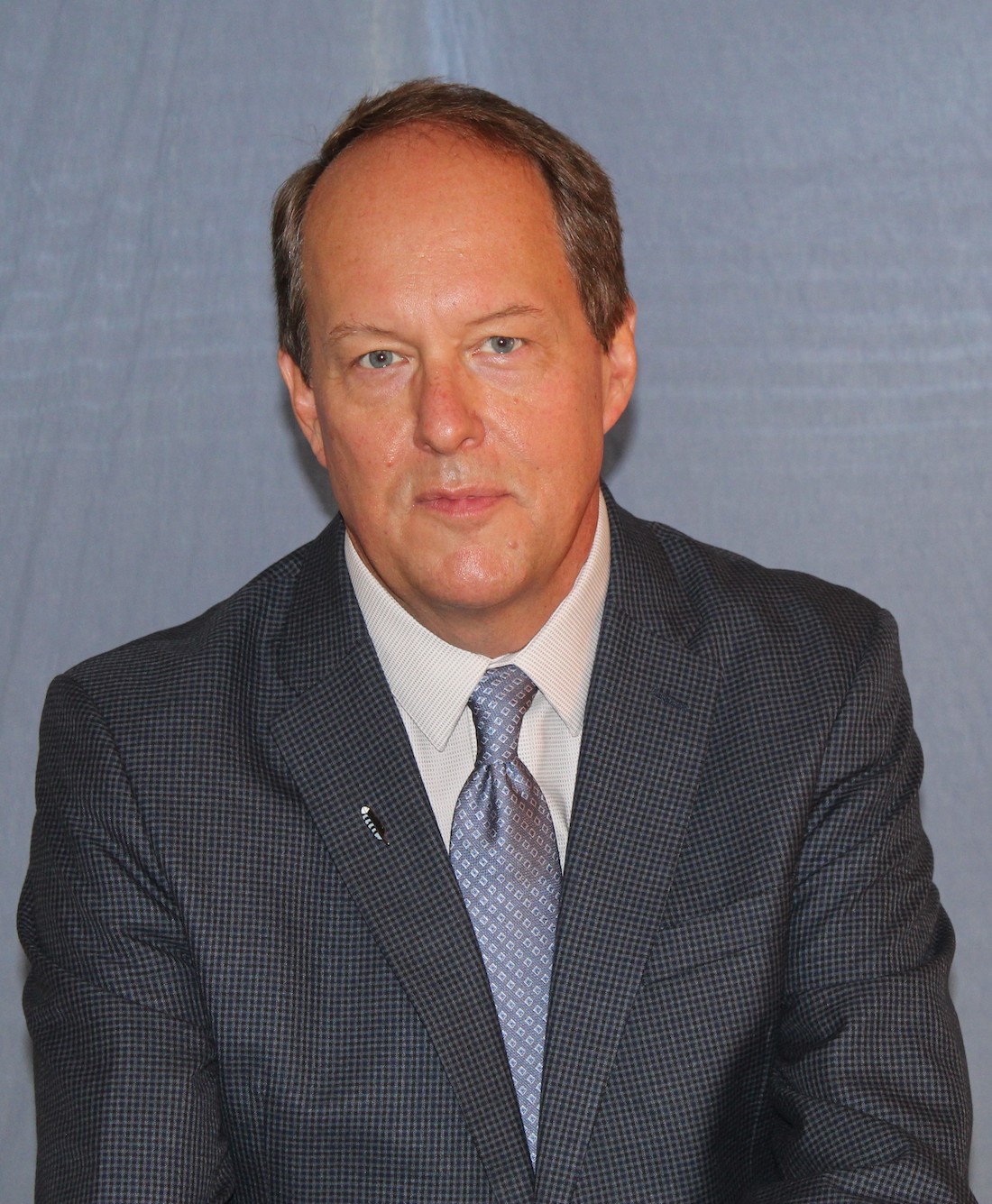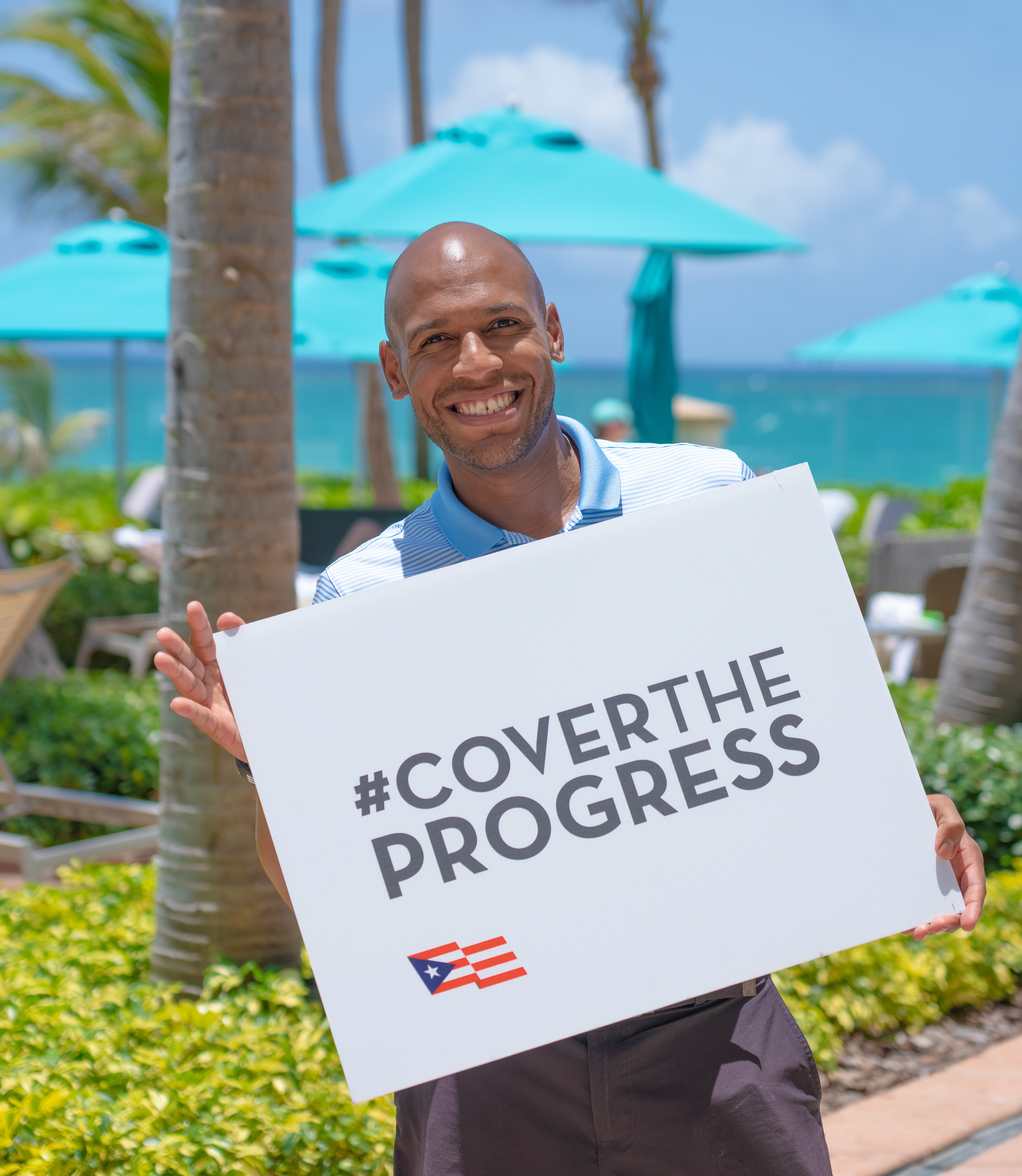Best of Silver Anvil Finalist: Signs of Progress After Hurricane Maria
By Greg Beaubien
August 2019
“S.O.S. WE NEED WATER/FOOD!!”
Residents of Puerto Rico’s Humacao municipality had written the message in big white letters on the street, hoping that people on airplanes flying overhead would heed their plea after Hurricane Maria devastated the island in September 2017.
According to an independent investigation commissioned by the government of Puerto Rico, nearly 3,000 people died on the island from the hurricane’s effects in the six months following the storm — either killed directly by flying debris or drowning, or indirectly by heart attacks, house fires and loss of electrical power.
Hurricane Maria made landfall on Puerto Rico, a U.S. territory, just two weeks after another hurricane, Irma, had skirted the island on Sept. 6, killing three people and leaving more than 1 million without power.
As The New York Times reported, Maria flooded nearly 650 houses in Puerto Rico with seawater. Other dwellings were inundated with water from an overflowing lake, a river and two ponds — or with raw sewage. Winds roaring at 155 miles per hour tore walls and roofs off many homes. As CNN reported, the Category 4 hurricane left most of the island without power for months and caused billions of dollars in damages.
Helping with recovery
Tourism represents about 7.2 percent of Puerto Rico’s gross domestic product, and more than 3 million people visit the island every year, adding some 60,000 jobs and $4 billion to the local economy in 2017, according to the Foundation for Puerto Rico, an economic-development nonprofit.
After Hurricane Maria thrashed the island, millions of people around the world saw the devastation in the media. To prospective tourists, Puerto Rico appeared all but decimated.
Ketchum was hired to convince socially conscious travelers that one of the best ways to help Puerto Rico recover economically was to visit the island. Its “meaningful travel” campaign would aggressively promote tourism by debunking myths about the island’s condition through third-party accolades.
The PR team knew that the media would likely mark Maria’s one-year anniversary in September 2018 by replaying scenes of the wreckage and misery the storm had caused on the island. Such coverage would hinder the hard-won efforts to attract visitors over the previous 12 months. Ketchum’s research showed that anniversary coverage of hurricanes Katrina and Sandy had typically been 90 percent negative and had rehashed images of destruction. More than 50% of travelers surveyed said media coverage of Hurricane Maria had negatively affected their views of Puerto Rico.
With a budget of $297,666 and working in partnership with the government nonprofit Discover Puerto Rico, the Ketchum team sought to preempt negative news reporting and to persuade the media to cover the progress and improvements that Puerto Rico’s tourism industry had been making.
Seeking forward-looking media coverage
The team decided to co-opt the much-publicized “S.O.S.” message that residents had scrawled on the street a year earlier. At the same intersection, a new message was photographed from above: Residents gathered on a rebuilt corner with “Bienvenidos,” the Spanish word for welcome, written in cursive script on the pavement where the S.O.S. message had been a year earlier. Under that message, amid other colorful chalk writing, an appeal had been stenciled: #COVERTHEPROGRESS.
The PR team’s goal was not to sugarcoat the devastation that Hurricane Maria had wrought in Puerto Rico, but rather to demand fair, forward-looking media coverage of the island’s tourism industry, and of the residents whose futures were at stake.
Once Puerto Rico declared itself “open for tourism” in December 2017, three months after Maria, Ketchum pursued a “seeing is believing” strategy and enlisted travel influencers to show their followers the island’s progress toward recovery firsthand. To inspire reporters to “cover the progress” at the one-year milestone in September 2018, the team created visual content such as before-and-after images of tourist spots in Puerto Rico, video footage, tourism data, visitor testimonials and images of tourism-industry people holding up #CoverTheProgress signs.
A month before the anniversary, media relations started with an exclusive story on CNN, the same outlet that had first reported the S.O.S. image in 2017. The team subsequently pitched a variety of other news media — online and print travel publications, and consumer lifestyle and hard-news outlets among them. The story soon began to spread.
Improving perceptions
In a tweet from August 2018 bearing the #CoverTheProgress hashtag, Victoria Leandra, a journalist and producer at Vice News in New York, posted photos of the high school she had attended as a teenager in Puerto Rico. The first image shows the school’s gymnasium after Hurricane Maria hit the island, with some of its walls blown down and debris scattered across the floor. The second image shows the same gymnasium a year later, looking brand new. Although she had learned about the campaign from being on Ketchum’s media list, she said, “My decision to use the hashtag and publish the images was personal.”
Not all of the resulting coverage was positive, however. In September 2018, Frances Robles, who covers Puerto Rico for The New York Times, tweeted: “The Puerto Rican tourism agency has been pushing for media to #covertheprogress in Punta Santiago. So we did. Here’s what we found: mold, falling roofs, people living in garages and on the floor,” particularly in neighborhoods whose residents depend on pensions and disability checks.
Still, while most coverage of natural-disaster anniversaries is about 90 percent negative, this time it was 70 percent positive and 15 percent neutral, Ketchum said. Puerto Rico’s recovery efforts received favorable headlines on CNN and ABC News, and in USA Today, Forbes, Conde Nast Traveler and Travel + Leisure, among other media outlets. In January, The New York Times named Puerto Rico its No. 1 place to go in 2019.
Ketchum’s research showed a 23 percent improvement in one year in positive perceptions of Puerto Rico as a destination. Flight capacities resumed to pre-Hurricane Maria levels, and properties on the island once again neared full occupancy. Four more major cruise ships are now visiting the island than before the storm.
“Being on the island and completely disconnected, we didn’t realize how far our message had traveled,” Janet Gonzalez, a resident of Humacao, told Travel Weekly. “We’re thankful it did, but now we are ready to turn the page.”
Best of Silver Anvil Finalist
Client: Discover Puerto Rico
Agency: Ketchum
Category: Issues Management



